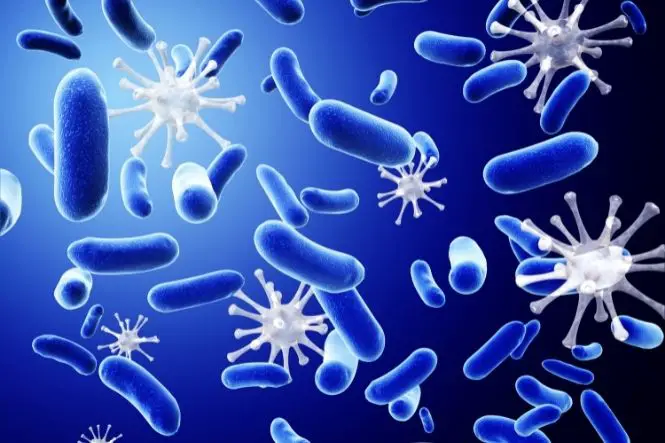Bacteria and viruses are often confused with each other, but they are very different. Bacteria are usually harmless and viruses are usually harmful, though there are bad bacteria and useful viruses.
Bacterial Facts
Bacteria (singular ‘bacterium’) are made up of only one simple cell – they are called single-celled organisms.
A bacterium can be shaped like a sphere (coccus), rod (bacillus) or spiral (spirillum).
Bacteria are about 1000 nanometres in size (a nanometre is one millionth of a millimetre).
Different bacteria can live at a huge range of temperatures, from ice to hot springs, and can even live in radioactive waste.
People have more bacterial cells in their bodies than human cells – and more than there are people on the planet.
Most bacteria are useful – gut bacteria produce vitamins and help people (and animals) digest their food, and bacteria in the roots help legumes (plants in the pea and bean family) get nitrogen out of the soil, which helps them to grow.
Bacteria are used in making cheese, yoghurt and sourdough bread (see ‘Make Yoghurt and Grow Yeast’).
Bacteria produce oxygen – perhaps as much as half of the oxygen in the atmosphere.
Bacteria (usually dead or weak ones) are used to make vaccines.
Bacteria are used to clean water in sewage plants.
Bacteria can help clean up oil spills.
Bacteria can cause food poisoning (sickness and diarrhoea) – this is why chicken needs to be cooked thoroughly, and why some food should be kept in the fridge.
Bacterial infections can be cured with antibiotics – drugs that kill bacteria.
Using antibiotics too often, or for diseases that don’t need them, like colds and flu (caused by viruses) can stop the antibiotics working (known as antibiotic resistance). MRSA (methicillin-resistant or Multiple-Resistant Staphylococcus Aureus) is a resistant form of a common bacterium found on the skin, which can cause infections after surgery.
Antibiotics come from fungi (see ‘Facts About Fungi, Mushrooms and Toadstools’).
Viral Facts
Viruses are simpler than bacteria, made up of genetic code (DNA or RNA) with a protein shell – some scientists do not describe them as being alive.
Viruses are 20 to 250 nanometres in size.
Viruses can’t reproduce (make new viruses) on their own – they need to take over another cell (plant, animal or human).
Some viruses are useful – viruses called bacteriophages (means ‘bacteria eater’) kill bacteria and are used to protect people against harmful bacteria in food.
Most viruses cause disease – colds and flu are caused by viruses, as well as common diseases like chickenpox, measles, mumps and German measles (rubella). HIV, which causes AIDS, is a virus.
Once people have had some viral infections, like chickenpox, it makes them immune from having it again – vaccination creates the same kind of immunity, so can prevent people from getting the viral infections.
The more people who are vaccinated reduces the amount of infection in a population, protecting even those people who are not vaccinated – this is called ‘herd immunity’. Depending on the virus, 85-95% of people need to be vaccinated to protect the rest of the people – this is why vaccination is important.
There is no vaccine against colds, as there are so many different viruses that cause colds.
Flu vaccines change every year, as there are a number of different flu viruses, and the viruses themselves mutate (change) all the time.
Plants can get virus infections – they can make leaves and flowers change colour, or make leaves and stems twisted.
Viral infections cannot be cured with antibiotics – most viral infections, like a cold or flu, or some chest infections, just get better on their own.
Viruses are passed on by sneezing and coughing, or by touching someone who has a viral infection – this is why it is important to cough or sneeze into tissues and wash hands regularly when infected with a cold or other viral infection.





